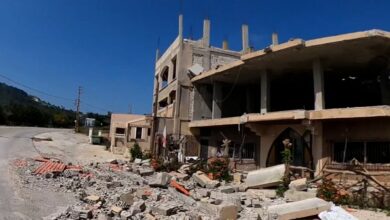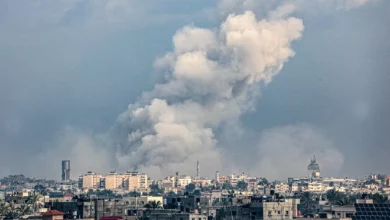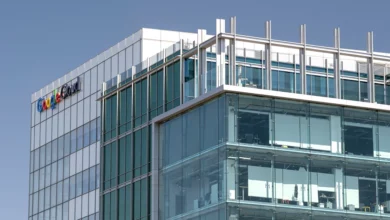Prior to the American invasion and subsequent occupation of Iraq in 2003, the only military force in the modern Middle East with extensive experience in urban warfare was Israel.
Due to the nature of the Israeli occupation, over the past several decades, the Israeli army has sharpened its tools for occupying and controlling densely populated urban areas. Israeli strategists looked to history, particularly the French occupation of Algeria to improve their tactics. When Americans landed in Iraq, Israeli military strategists were on hand to assist and Israeli tactics were implemented. Walls dividing populations into easily managed pockets were erected. Other walls were put in place to protect “strategic interests.” Some observed this as Israelification of American war efforts: Walls are common features both in Israel’s occupation of the West Bank and America’s occupation of Iraq.
In the last several weeks, a total of four walls were erected in central Cairo following clashes between security forces and protesters. The area around Egypt’s Interior Ministry and parliament buildings is beginning to resemble occupied territory in an urban conflict.
Onlookers have been shocked by what resembles Israeli tactics in controlling insurgencies: barbed wire blocking streets, concrete walls, military checkpoints and armed soldiers. Such scenes also resemble the American occupation of Iraqi cities.
Of course, in Egypt’s case, this is not an occupation by foreign troops and these tactics are not widespread. Outside the immediate area of Tahrir Square and government offices, Cairo does not feel or look occupied, and it shouldn’t; after all there is no foreign occupation here. However it is no coincidence that Egyptian security forces, which train and receive assistance from American security experts, are implementing such tactics.
Although Cairo’s streets were never blocked with 3-meter high concrete walls before recent events, walls are not new to Cairo. While pictures of Cairo in the 1960s show a city free of barriers around museums, government buildings and hotels, this openness began to change towards the end of Sadat’s tenure. From around 1977 onwards, more walls and fences appeared throughout the city, mostly protecting institutions that were the target of public outcry against government policies.
From the early 1990s, a new wave of walls and fences appeared amid the Mubarak regime’s attempt to clamp down on public spaces in response to protests against Mubarak’s support of the US invasion of Iraq. It was then that Cairo’s main squares and intersections were graced with bulky green fences that remain to this day. Another wave of walls came in the aftermath of 11 September and with Egypt’s decision to assist the Bush administration in its “war on terror.” By then, government buildings, main attractions and five-star hotels were secured as bunkers.
In the case of occupation, such as in Iraq or the Palestinian Territories, there is a raison d'etre for such high levels of security manifest in walls. Occupiers need to secure their interests against insurgencies from a hostile population. However, in the case of Cairo, it was not explicitly clear who the regime was protecting and from whom. One simple explanation is the economic inequalities since the early 1970s and the growing gap between the haves and the have-nots. One-time accessible locations such as high-end hotels needed to be walled off to secure wealthy clients from the general public.
The trend has continued over the years and is currently manifested in the form of gated communities where upper classes willfully separate themselves from the less privileged, whom they view as a threat. Thus, walls have become a spatial manifestation of class inequality and social injustice.
There are other sets of walls, which have been fully integrated into society. Security barriers have been put in place around strategic locations such as certain embassies, such as the American, Israeli and British ones. The street in Giza where the Israeli Embassy is located has remained occupied territory for over twenty years. Residents must be checked by security to enter their own buildings and they must inform security regarding guests twenty-four hours in advance. Permanent iron barriers have blocked traffic for over a decade in front of the American and British embassies. Imagine if the Egyptian Embassy demanded similar security measures — blocking major streets in London, Washington or Tel Aviv.
The latest walls seem absurd today. When previous walls were erected throughout the city, they too seemed odd, but with time, they were accepted into the city’s daily fabric. The basic question regarding these various types of walls is: To whom does the city belong? Egyptian citizens should be able to walk down any street in their capital city without crossing checkpoints, without showing identification and without maneuvering around concrete walls blocking traffic.
This is a matter of Egyptian sovereignty. The appearance of the latest walls in Cairo’s streets is troubling because such walls make clear what was already visible: The Egyptian government, learning from colonial contexts elsewhere, is interested in protecting the political and economic interests of a few over protecting the rights of all Egyptians to access their own capital. Such architectures of occupation create a situation where soldiers in uniform stand on one side of the wall and the masses stand on the other.
This is not Baghdad. This is not East Jerusalem. Those standing on both sides of these walls are Egyptians. Those in power should never have allowed such walls to exhibit their inability to manage a just society.




